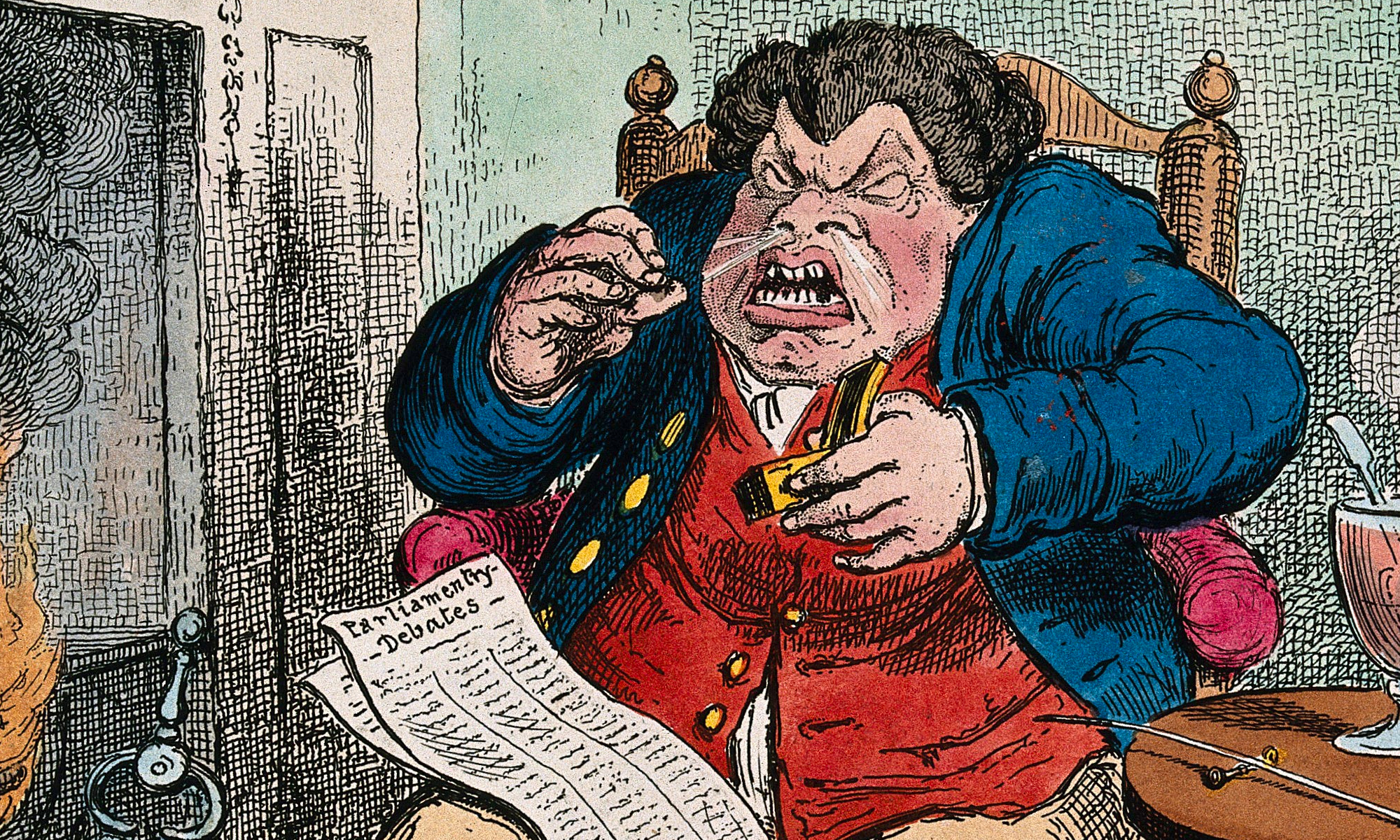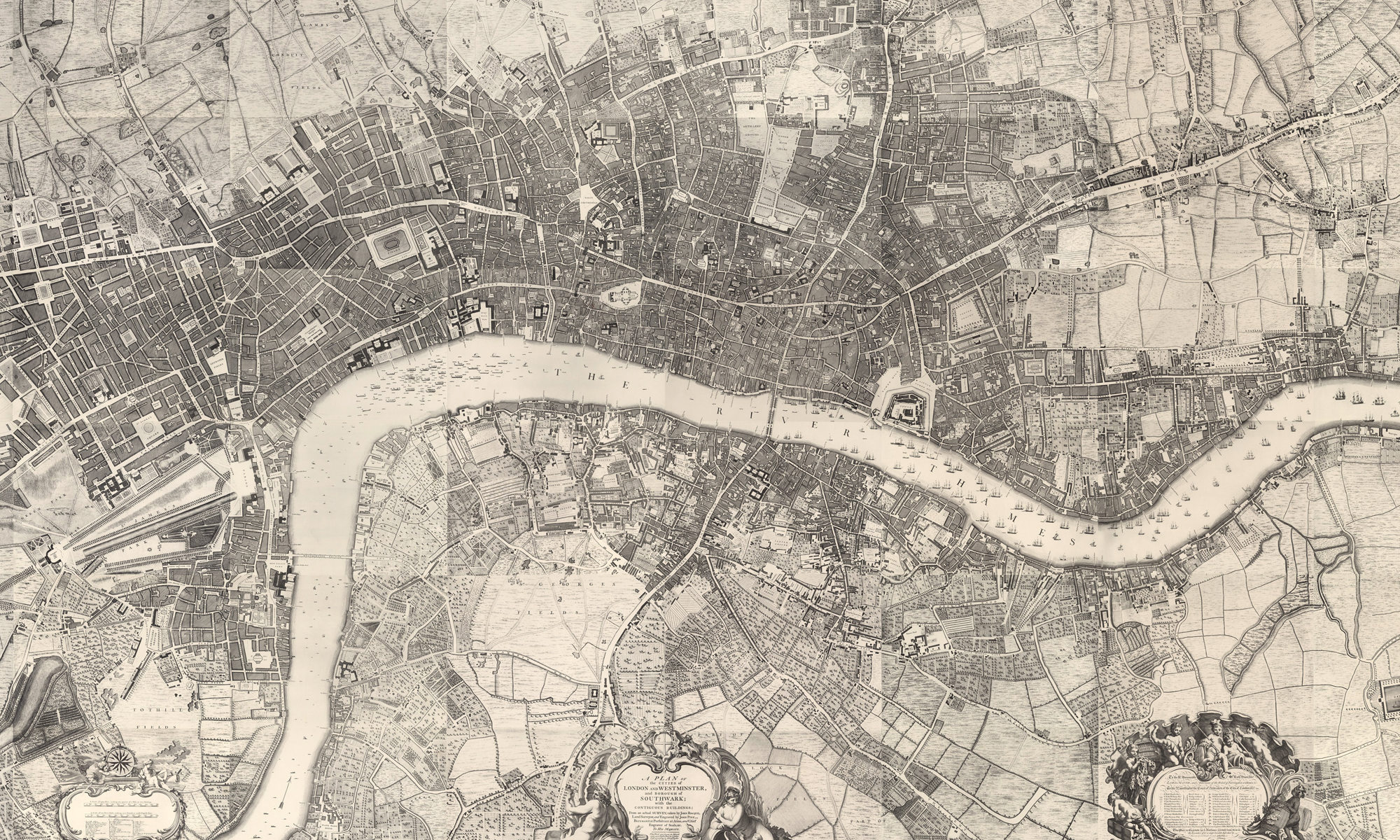During the period covered by the project, London transmogrified from the sleepy harbour and court town of a minor league European power into an imperial capital, global city, and portent of modernity. A dirty and dazzling ‘urban machine for living’, crowded and chaotic and thronged by citizens of the world, it was Britain’s largest manufacturing centre, its most significant port, and its locus of church, government, the professions, finance, and the press. Its history was also written in blood and anguish.
Featured Image
John Rocque’s famous 1746 map of London. David Rumsey Map Collection
Demography
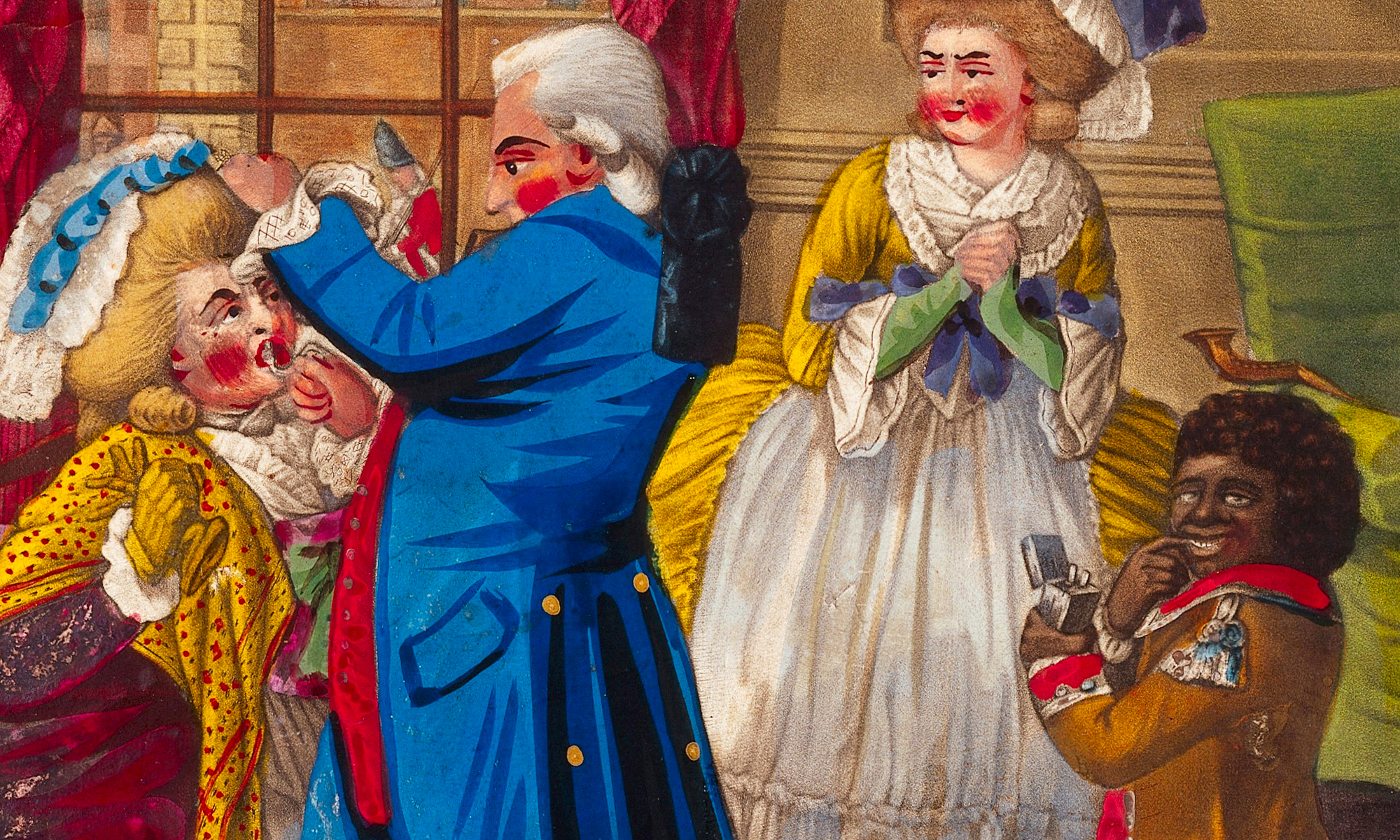
- Social, political, and economic changes meant that London experienced exponential population growth over the long eighteenth century; it exploded from 200,000 people in 1600, to 400,000 by 1650, to 575,000 by 1700, to 675,000 by 1750.
- In 1801, when the first modern census was taken, the capital contained 900,000 souls, making it the largest city in Europe, surpassed internationally only by what we now know as Tokyo and Beijing. By 1860 – by which point 13% of the English and Welsh populace were metropolitan – its population nudged 3,000,000, making it larger than England’s next twenty biggest cities put together.
- High mortality rates among native Londoners caused by unhealthy living conditions meant this dramatic expansion was largely fuelled by migration; as well as being one of the world’s largest cities, London in our period was also arguably its most diverse, welcoming new residents at a rate of 6,000–8,000 people per year.
- It had substantial Irish, French, and Azhekani and Sephardim Jewish communities (the latter fleeing persecution in Central and Eastern Europe and the Iberian Peninsula respectively), with the number of economic and political refugees from mainland Europe increasing following the revolutions of 1830 and 1848.
- Slavery, the shipping industries, and war meant London was also home for a large number of black people from Africa, the Caribbean, and North America – between 5,000 and 10,000 men and women by 1783, according marriages and deaths recorded in parish registers – who found work in a whole range of urban occupations, and who played a key role in the city’s emerging anti-imperialist politics.
- In the eighteenth century, they were joined a large community of ‘lascars’ from Bengal, India, and Malaysia, mainly working on East India Company vessels, while Chinese immigrants started to arrive in large numbers from the 1780s, again mainly employed by the East India Company and the Blue Funnel Line.
Geography
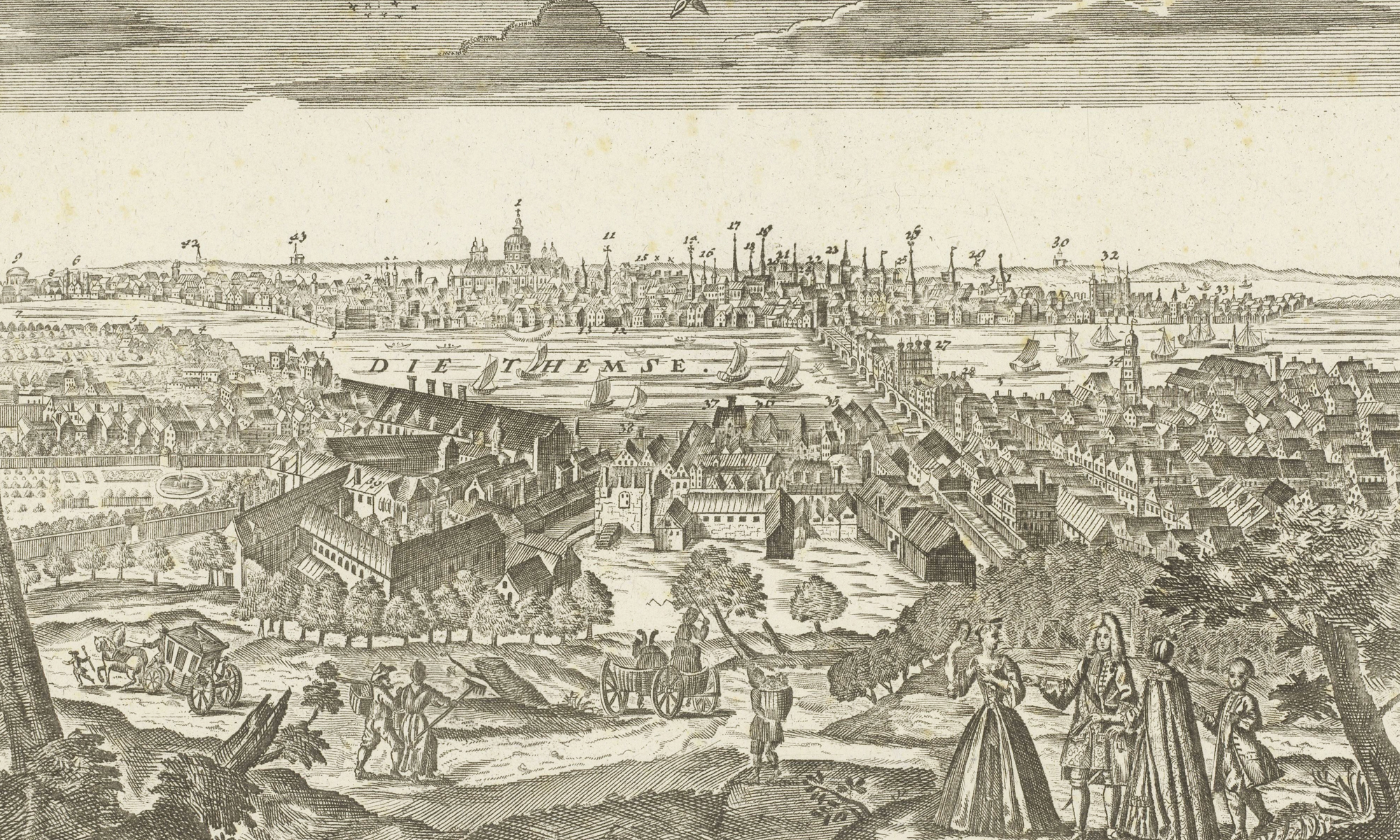
- London by the end of our period was a ‘loose baggy monster’ that had long since outgrown its medieval walls.
- Its built-up metropolitan core extended as far as Chelsea to the west, and to the Isle of Dogs to the east; to the north and south, urban sprawl was creeping ever-further into rural Middlesex and beyond Southwark into Surrey, thanks to a sophisticated network of bridges, roads, and ribbon developments.
- The introduction of the railway in 1830s created isolated commuter towns in places like Richmond, Ealing, and Wimbledon.
- Architecturally, the central third of the capital had been rebuilt following 1666’s Great Fire to a regular pattern of buildings punctuated by churches, markets, parks, and squares, while in the eighteenth century the West End was transformed by multi-storey stucco facades, private green spaces, and glass-fronted shops; niceties such as pavements and street-lighting were increasingly widespread.
- However, until the 1774 London Building Act, much metropolitan construction outside of these areas was haphazard and slum-like, while down to the creation of the Metropolitan Board of Works in 1855 a sanitary infrastructure originally created for a handful of medieval parishes creaked audibly – and, at times, olfactorily – under the strain of breakneck expansion (with smog, faeces, and corpses proving particularly troublesome for municipal authorities).
- Poverty-stricken communities lived cheek-by-jowl with their wealthy neighbours, although different localities acquired distinct social and occupational profiles over the course of our period: the East End became the centre of warehousing and manufactures; commerce, finance, and the professions services dominated the City (which also housed England’s most significant law courts and the inns of court); while retailers, skilled craftsmen, and the entertainment industry clustered in the West End.
Governance
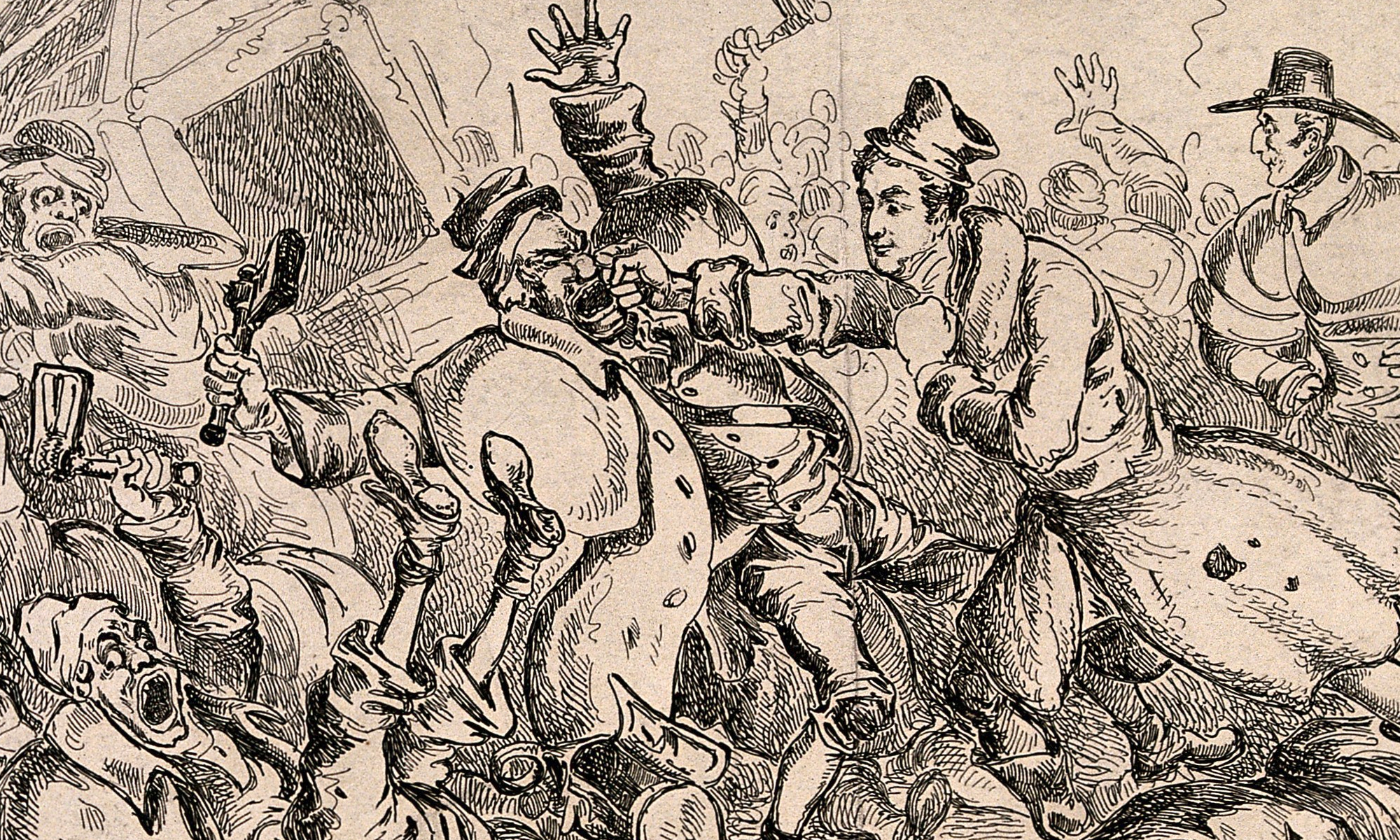
- Like its physical dispositions, London’s government in the long eighteenth century was a ramshackle and fragmented affair comprised of a welter of overlapping, and often antagonistic, bodies (it wasn’t until 1889 that the city developed a centralised structure for management and planning in the form of the London County Council).
- A Common Council, Court of Aldermen, and Lord Mayor technically had jurisdiction over the original walled City, while north London beyond the walls was overseen by the increasingly powerful Middlesex Quarter Sessions.
- Reflecting its size and national importance, it was also represented by four Members of Parliament.
- However, day-to-day governance at local level continued to be administered by the ancient vestries of over 100 individual parishes, staffed by amateurs serving annual terms on a voluntary basis: as clerks, overseers of the poor, sextons, constables, and night watchmen. Originally designed to meet to the needs of rural medieval communities, the vestry system sometimes proved inadequate to the task of running of complex urban parishes of (in some cases) over 10,000 souls, although it was civic and participatory in ways now hard to imagine.
Economy
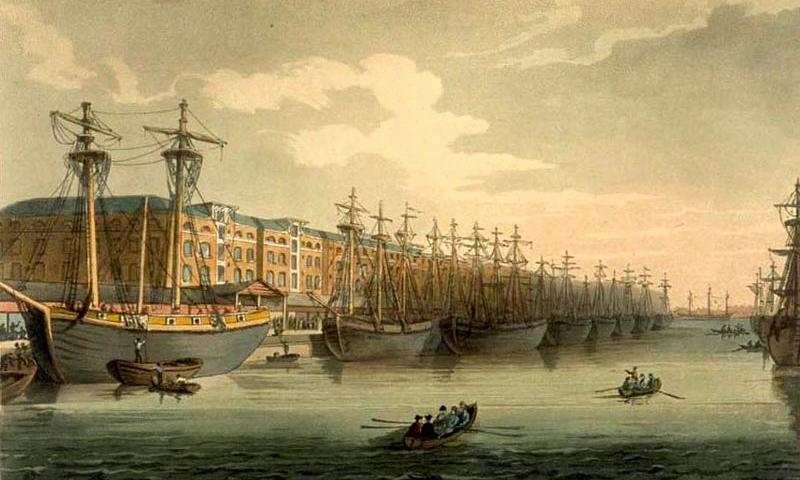
- While it had diverse and vibrant manufacturing, professional, retail, and service sectors, London was first and foremost a city of commerce.
- Europe’s busiest port, least restrictive trading environment, and most sophisticated banking centre, its tentacles extended across the North and Irish Seas and the Indian, Pacific, and Atlantic Oceans; it handled 56% of Britain’s imports and 70% of its exports by 1790, while trade-related vocations occupied a quarter of the capital’s workforce (from agents, bankers, brokers, dealers, and insurers to coopers, lighter-men, mariners, porters, sailmakers, shipbuilders, and wharfingers).
- It was the nodal point of an international commercial empire whose products it voraciously consumed, mainly via a handful of royally chartered companies: cork, coffee, drugs, fruit, oil, and wine flowed in from the Mediterranean, Turkey, and the Levant; calico, cotton, drugs, indigo, porcelain, tea, spices, and silk from India and China; cocoa, coffee, ginger, hardwoods, rum, sugar, and tobacco from the Caribbean; elephant teeth, fruit, gum, palm oil, and wax from Africa; corn, cotton, naval stores, rice, skins, and tobacco from North America; and ashes, deals, hemp, iron, linen, masts, tallow from Russia and the Baltic.
- London re-distributed these commodities to other parts of England via the coastal and overland trade, and re-exported them overseas in its capacity as an entrepôt, along with home-grown manufactures.
- Throughout most of our period, the majority of cargoes were landed at twenty-one ‘legal’ quays on the northern bank of the Thames between London Bridge and the Tower (the ‘upper pool’); smaller coasting vessels docked here directly, while lighters and barges conveyed goods from larger ships moored downriver. These were supported by other ‘sufferance wharves’ in Southwark and the East End, until massive capital investment allowed for the development of several large-scale enclosed docks in the early nineteenth century: St Katherine’s Dock by the Tower; Surrey Docks on the south bank; the East India and West India Docks at Blackwall and the Isle of Dogs; the New Docks at Wapping; and the Commercial Docks at Rotherhithe.
Colonialism & Slavery
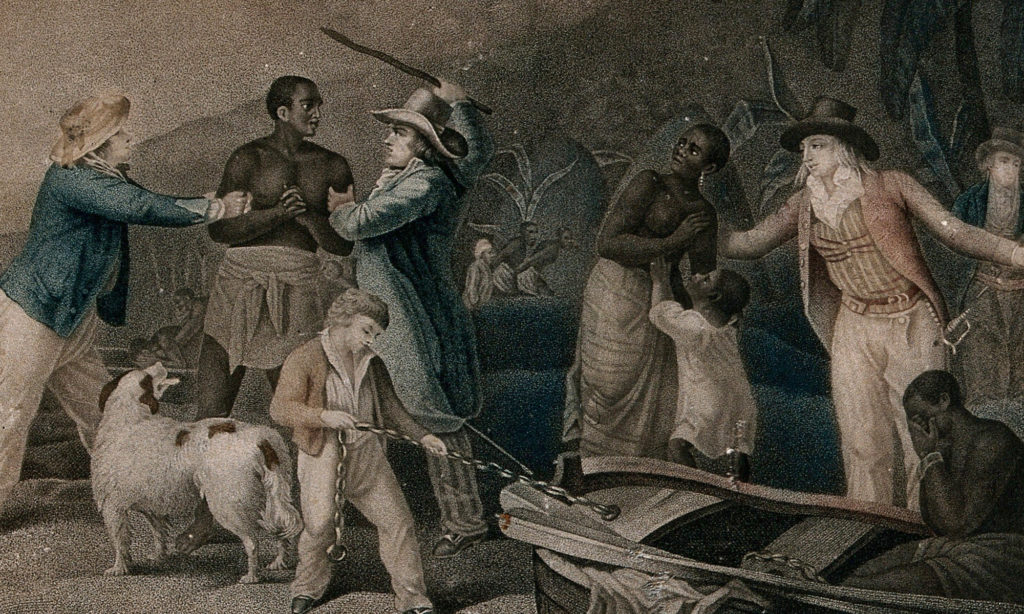
- As capital city of the eighteenth-century world’s most enthusiastic coloniser and enslaver, and administrative centre of the nascent British Empire, London’s glittering consumer abundance was undergirded by colonial violence.
- Many of the global commodities enjoyed by its citizens – foremost among them ‘new intoxicants’ such as tobacco and sugar – were grown on occupied territory stolen from native populations in the Caribbean and North America, and as a result of imperial expropriations in East India, Africa, and the Pacific.
- Throughout most of our period, London was also Britain’s most significant slaving port, with 3,351 voyages setting out from the capital’s docks before the abolition of the trade in 1807.
- Many of the city’s early monopoly trading companies had slaving interests (such as the Guinea Company, founded in 1618), while from the 1650s London spearheaded the notorious triangular trade between Britain, West Africa, and the West Indies/North America, in which English manufactures were traded for enslaved West Africans, who were in turn traded with plantation owners for cotton, tobacco, and sugar – themselves the products of slave labour – for the English and re-export markets.
- The West African Company (1672), originally founded to exploit Gambian gold reserves but which soon came to specialise in the abduction and forced transportation of men, women, and children, counted fifteen of the city’s Lord Mayors and twenty-five of its Sheriffs among its shareholders.
- Even after London was overtaken as a slaving port by Bristol (from c.1730) and Liverpool and Glasgow (from c.1750), it continued to be its primary economic beneficiary, while City financiers continued to bankroll all aspects of the trade by providing credit and insurance facilities for plantations, voyages, and cargoes.
- Many of these crimes against humanity were premeditated and perpetuated in coffeehouses: the Jamaica Coffee House in St Michael’s Alley (where slave voyages could be underwritten and slave-grown shipments haggled over); Lloyd’s Coffee House on Lombard Street (which insured and sold slave ships); and Garraway’s in Exchange Alley (where slave and plantation auctions took place).
Further Reading & Resources
- R. O. Bucholz & J. P. Ward, London: A Social and Cultural History, 1550–1750 (Cambridge, 2012).
- T. Hitchcock, R. Shoemaker, C. Emsley, S. Howard, & J. McLaughlin, et al., The Old Bailey Proceedings Online, 1674–1913
- T. Hitchcock, R. Shoemaker, S. Howard, & J. McLaughlin, et al., London Lives, 1690–1800
- S. Inwood, A History of London (London, 1998).
- J. Jenstad & K. Mclean-Fiander (eds), Civitas Londinvm: The Map of Early Modern London
- Layers of London
- Locating London’s Past
- D. Massey, World City (Cambridge & Malden, 2007).
- M. Ogborn, Spaces of Modernity: London’s Geographies, 1680–1780 (London & New York, 1998).
- R. Porter, London: A Social History (London, 1994).
- R. Shoemaker, The London Mob: Violence and Disorder in Eighteenth-Century England (London, 2004).
- J. White, London in the Nineteenth Century: A Human Awful Wonder of God (London, 2008).
- J. White, London in the Eighteenth Century: A Great and Monstrous Thing (London, 2012).
